全世界軍事百科事典
> アメリカ合衆国
> Shoulder Sleeve Insignia
> US Army Shoulder Patches
> Infantry
> US-INPTUS-00133

81 Infantry Brigade Patch. US Army
ランダム
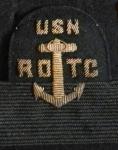
Naval Reserve Officers Training Corps (NROTC)

V corp Long Range Recon company ( Airborne/rangers) obsolute

Patch of the Border Troops of the Republic of Armenia
情報を変える
Shoulder Sleeve Insignia
Description
On a white square with rounded corners 2 1/4 inches (5.72cm) overall the Pacific Northwest Indian (Haida, Kwakiutl, Nootka) symbol of a raven in black, red and white all within a 1/8 inch (.32cm) red border.
Symbolism
The raven represents the fact that all units of this Brigade derive their history and background as Washington State units. The family crest of George Washington, a raven on a gold cornet, has been traditionally used to form the crest of Washington State unit insignia. The raven design is a combination of three Northwest Indian tribe designs of the raven. The head portion comes from the "Haida" Indians. The lower portion has been taken from the "Kwakiutl" Indians. The beak, eyes and mouth have been taken from the "Nootka" Indians. Most emphasis has been placed on the "Nootka" Indians as they lived on the Washington coast and the Olympic Penninsula. Both of the other tribes represented lived, for the most part, on the lower British Columbia coast and in the vicinity of Vancouver Island. The raven is one of the most common of Northwest Indian designs, but it represents one of the most unique types of design and is found only in the Pacific Northwest. The raven is considered to be of particularly good power in the legends of the Northwest Indian tribes. According to the legends this bird went into the supernatural world while the earth was still in darkness and the people could not see. The raven took the sun and escaped through a hole in the roof of the house of the "supernaturals" while they slept. Because the raven had to fly through the smoke to get out of the house, it discolored him black. While flying back to earth, with the supernaturals in chase, the parts of the sun were broken off forming the stars with the last and largest piece forming the moon. The raven then threw the sun into the sky where it gave off light and heat to the earth. The raven saved the Indians from their darkness and gave them light and a new life. The use of rectangles and squares is based on the extensive use of such shapes in Indian designs and carvings. Corners were usually rounded to tie the rectangle into the total design.
Background
The shoulder sleeve insignia was approved on 27 May 1970.
Description
On a white square with rounded corners 2 1/4 inches (5.72cm) overall the Pacific Northwest Indian (Haida, Kwakiutl, Nootka) symbol of a raven in black, red and white all within a 1/8 inch (.32cm) red border.
Symbolism
The raven represents the fact that all units of this Brigade derive their history and background as Washington State units. The family crest of George Washington, a raven on a gold cornet, has been traditionally used to form the crest of Washington State unit insignia. The raven design is a combination of three Northwest Indian tribe designs of the raven. The head portion comes from the "Haida" Indians. The lower portion has been taken from the "Kwakiutl" Indians. The beak, eyes and mouth have been taken from the "Nootka" Indians. Most emphasis has been placed on the "Nootka" Indians as they lived on the Washington coast and the Olympic Penninsula. Both of the other tribes represented lived, for the most part, on the lower British Columbia coast and in the vicinity of Vancouver Island. The raven is one of the most common of Northwest Indian designs, but it represents one of the most unique types of design and is found only in the Pacific Northwest. The raven is considered to be of particularly good power in the legends of the Northwest Indian tribes. According to the legends this bird went into the supernatural world while the earth was still in darkness and the people could not see. The raven took the sun and escaped through a hole in the roof of the house of the "supernaturals" while they slept. Because the raven had to fly through the smoke to get out of the house, it discolored him black. While flying back to earth, with the supernaturals in chase, the parts of the sun were broken off forming the stars with the last and largest piece forming the moon. The raven then threw the sun into the sky where it gave off light and heat to the earth. The raven saved the Indians from their darkness and gave them light and a new life. The use of rectangles and squares is based on the extensive use of such shapes in Indian designs and carvings. Corners were usually rounded to tie the rectangle into the total design.
Background
The shoulder sleeve insignia was approved on 27 May 1970.
もう一度カテゴリーから: Infantry
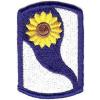 69 Infantry Brigade Patch. US Army
69 Infantry Brigade Patch. US Army
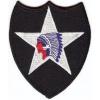 2 Infantry Division Patch. US Army
2 Infantry Division Patch. US Army
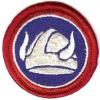 47 Infantry Division Patch. US Army
47 Infantry Division Patch. US Army
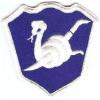 258 Infantry Brigade Patch. US Army (currently - 158 Maneuver Enhancement Brigade)
258 Infantry Brigade Patch. US Army (currently - 158 Maneuver Enhancement Brigade)
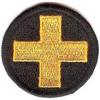 33 Infantry Brigade Combat Team Patch. US Army
33 Infantry Brigade Combat Team Patch. US Army




